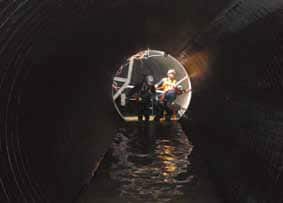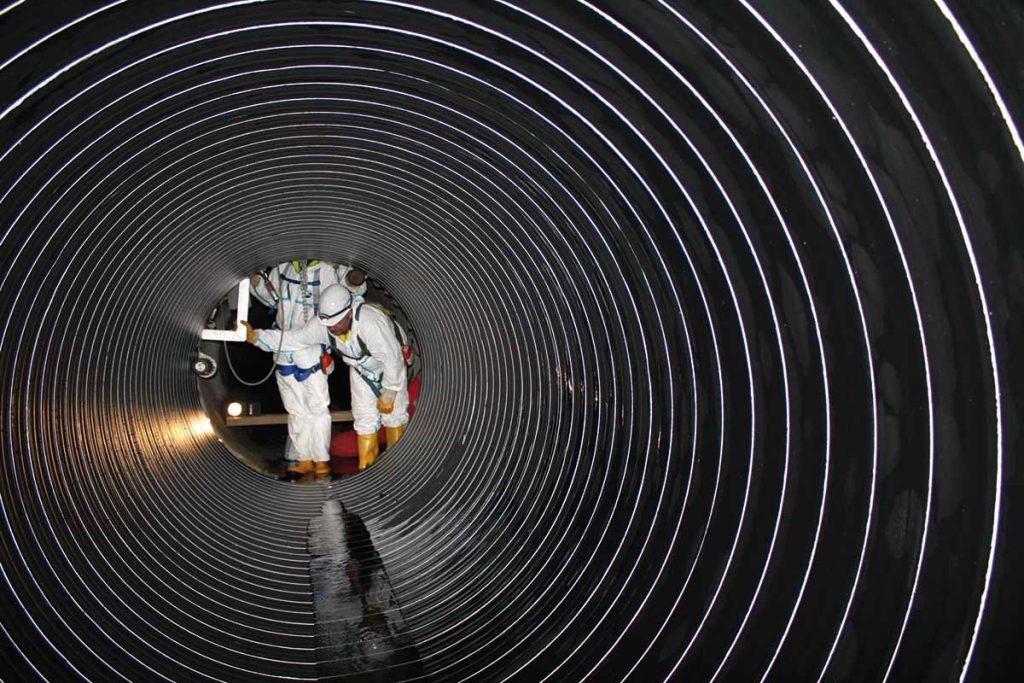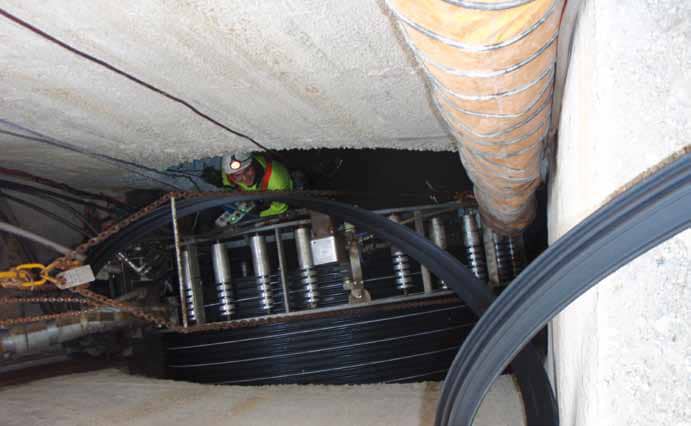SPR™PE Sets Records in Sydney
Project Scope
Sewer rehabilitation record in Sydney: SEKISUI Rib Loc, a subsidiary of SEKISUI SPR Group delivered the world’s longest and largest continuous spirally wound pipe liner and licensee Interflow installed it from a fixed winding machine. The pipe liner was 633m long, 2.4 metres in diameter, and weighed almost 100 tonnes.
633
Meters Installed
2.4 Meters
Pipe Diameter
SPR™PE
Spiral Wound Method
Challenges from the Start
The North Georges River Submain (NGRS) is a concrete sewer that runs from the Sydney suburbs of Fairfield to Arncliffe. It was constructed in stages between 1940’s and the 1960’s and in some parts was gas attacked and in need of rehabilitation. A part of the sewer that required renewal was a 633m long section between two access chambers. Big challenges for the two partner companies: SEKISUI SPR had to provide a structural pipe liner at such a large diameter, and Interflow had to install a liner from existing access chambers and in continuous lengths between the access chambers.

The Solution

With SPR™PE, a unique steel reinforced spirally wound high density polyethylene liner, SEKISUI Rib Loc had the perfect solution for this project. The pipe liner is formed in-situ by spirally winding strips of composite profile together using a winding machine from inside an existing access chamber. A major advantage of SPR™PE is that the composite action between the steel and the plastic produces a pipe liner with a high strength to weight ratio. This makes it possible to renew large diameter pipes cost-effectively. The size and length of a spirally wound pipe that can be produced from a fixed machine is governed by the torque of the winding machine and its ability to overcome the frictional forces of the newly wound pipe as it rotates inside the host pipe. In order to be able to install the liner in one continuous length over 633 m Interflow developed additionally an innovative technique for reducing these frictional forces by using the flow in the pipeline to float the pipe liner while it was being wound. The technique involved controlling the water levels inside and outside the liner to achieve optimum buoyancy of the liner.
Liner Installation
Firstly, the pipe was cleaned and debris and silt was removed from the line. The next step was to setup the SPR™PE winding machine inside the downstream access chamber. The profile was fed from spools above ground into the winding machine. The winding machine was set to produce a 2400 mm fixed diameter pipe; the largest diameter that could fit into the existing pipe. As more profile was fed into the machine the newly formed pipe corkscrewed its way to the upstream access chamber. The liner was installed with live flow running constantly as the sewer had to remain in operation at all times. The flow levels were continuously monitored to make sure that buoyancy of the pipe liner was maintained. Spools of profile were delivered to site as they were required and this helped to keep the size of the site footprint small during the project. At the end of the installation, when the winding machine was turning 633 metres of 2400 mm diameter pipe all at once, the torque levels of the machine were still low indicating that even longer lengths of pipe could be installed using this technology. The ends of the liner were sealed with structural epoxy and the annulus between the SPR™PE liner and the host pipe was filled with cement grout. The project was completed without any major safety or environmental incidents. SEKISUI Rib Loc and Interflow successfully provided the client with a solution to a challenging problem and in doing so has extended the boundaries of trenchless large diameter pipeline renewal beyond the limits of what was previously considered possible.

Other Projects
